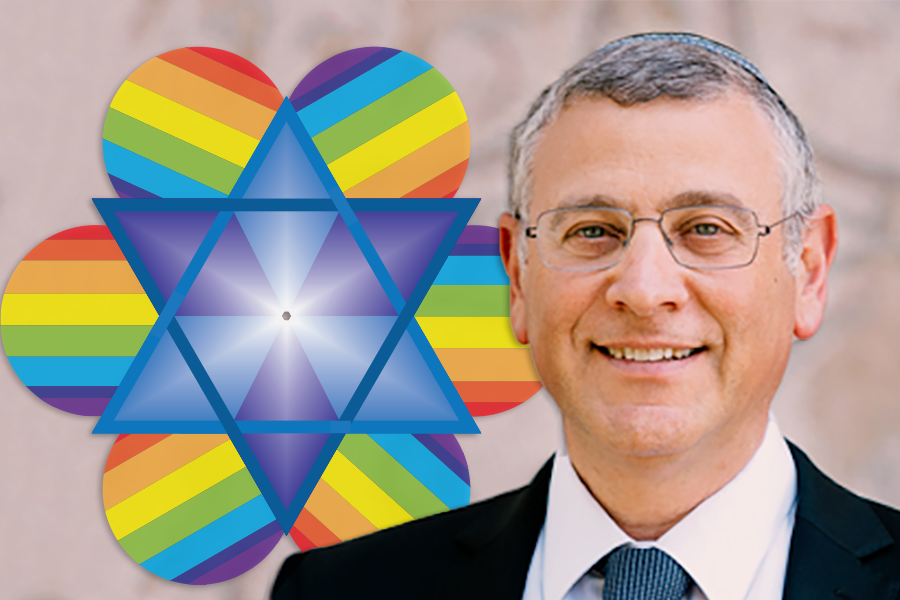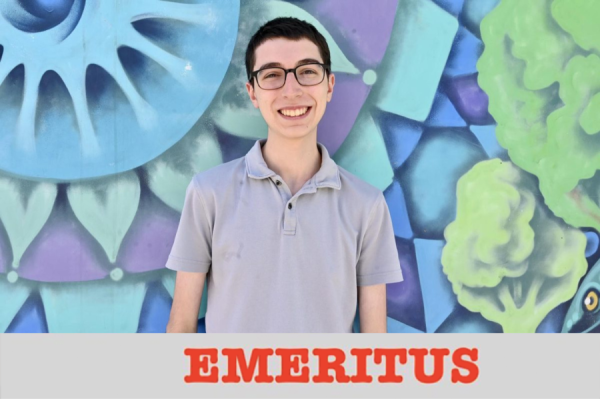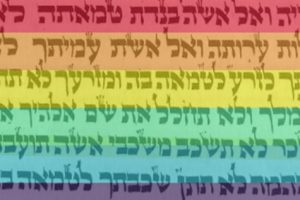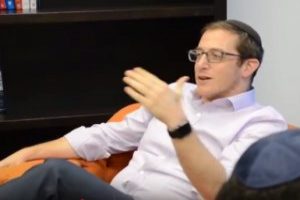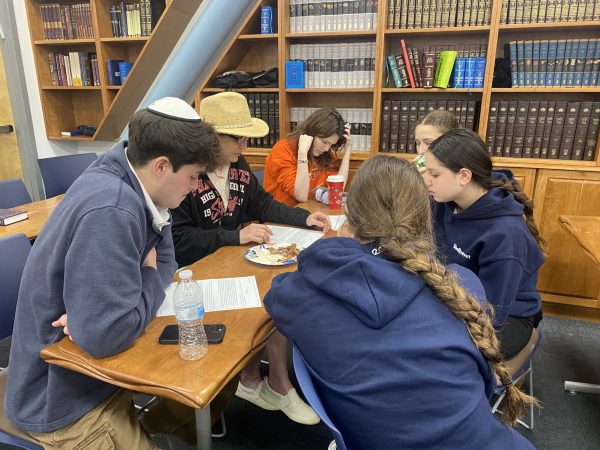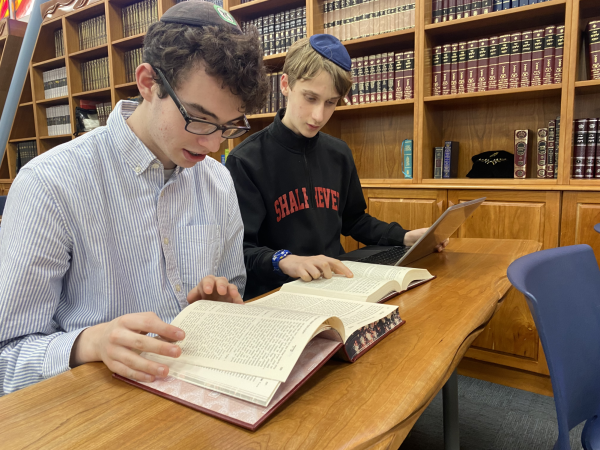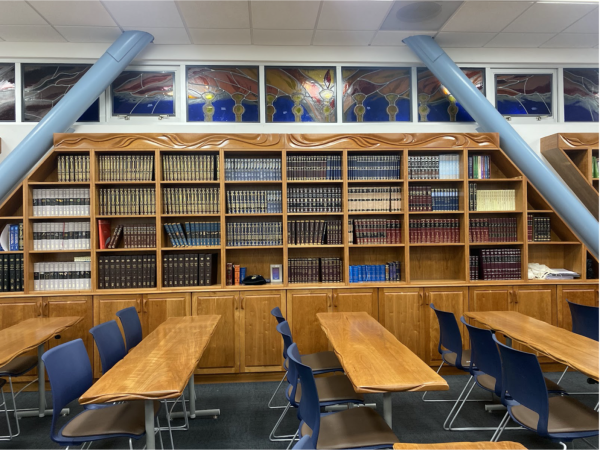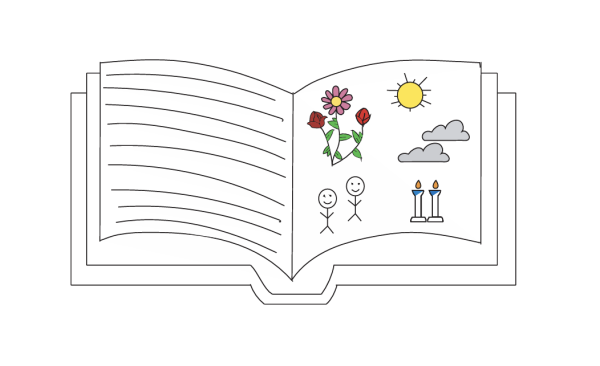For Orthodox LGBTQ, Rabbi Lau offers a guide to both religious and family life
Prominent Israeli rabbi maps a life of LGBTQ Jewish observance
BP Graphic by Ezra Helfand, Photo: facebook.com/Dr.Benny.Lau/
LIGHT: Rabbi Benny Lau says the instructions and meaning of Torah can guide all kinds of people, whatever their sexuality or gender identity.
There is no map in Judaism to guide an LGBTQ person in family life, but Rabbi Benny Lau has tried to create one, blending what he describes as the disparate worlds of Torah ideals with the reality of the lives of real people.
Rabbi Lau, an Israeli rabbi and social justice activist who leads the Human Rights and Judaism in Action project of the Israel Democracy Institute, last Oct. 10 issued a new document with recommendations on how to live as a person or family who is both Jewish and lesbian, gay, bisexual, transgender or queer.
The statement is all in Hebrew and titled “Lo Tov Heyot Ha’adam L’vado” –– “It is not good for man to dwell alone,” from Bereishit 2:18. It was published on Rabbi Lau’s Facebook page, where it has received thousands of likes and views. As of March 24, it has been shared 644 times, has 757 comments and has received more than 3,200 likes. It also has been written about or described by Jewish, Israeli and secular news organizations around the world.
Unlike related initiatives in the Orthodox Jewish community, which have focused on how synagogues and schools should welcome LGBTQ members, “Lo Tov Hayot” addresses the members themselves — the people most directly affected, and for whom no guidance in Jewish law or practice has previously existed.
Rabbi Lau opens his posting by putting sexuality and gender preference status into the category of the ways humans struggle in life, and more specifically in Judaism.
Whereas an ideal world attempts to create exact, non-changeable truths, he writes, reality creates another “floor,” or level, of experience — that of the individual living a life of personal needs, gifts and challenges.
“Our religious world is always built of these two floors — the ideal Torah floor and the reality of the world as it is,” Rabbi Lau writes. “But whoever wants to fully worship God in the world should get used to holding in his hands both the ideological Torah and the reality of life, and live with both.”
For those whose sexuality or gender identity do not fit into Torah categories, he says, this should mean starting with honesty and self-acceptance, and then finding a partner with whom to fulfill the needs shared by all human beings. Among those needs, he states, are the desire to raise children and to hold a commitment ceremony of some kind to begin a joined chapter of life.
“The document here is not a book of halacha,” writes Rabbi Lau. “This is a file of recommendations for managing the marital and family life of the members of the LGBT community within the family and the religious community.”
Shalhevet Head of School Rabbi Ari Segal, who in 2016 published the first-ever “pledge” for high schools announcing their welcome to LGBTQ+ students, applauded Rabbi Lau’s statement, particularly its focus on relationships.
“Even if halacha doesn’t condone homosexual relationships, Judaism has what to say about the values we live by,” Rabbi Segal said in an interview with the Boiling Point.
He said monogamy was one of those values.
“You find someone and you build that relationship,” Rabbi Segal said. “So nobody has been saying that — not because nobody cares, by the way, but because it’s hard. It’s hard to thread the needle of public policy in Orthodox communities.”
Rabbi Lau’s document outlines four components for living as both a Jew and a member of the LGBTQ+ community.
The first, he said, is recognizing and ideally announcing that one is LGBTQ. Many religious Jews stop right there, fearing exclusion. But Rabbi Lau considers it a critical first step, even if only a few people are told.
“Standing with your eyes open in front of who you are is a threshold condition for choosing life,” Rabbi Lau wrote. “This standing, alone in front of the mirror, is the defining moment before coming out of the closet. Of the ability to answer the Creator’s question ‘eicha’ — where are you — and not to hide.”
No matter how many people they tell, he says, the person should then move on into adult life, possibly finding a permanent partner. That is the second component.
“The family outlined in the Torah as ideal is that of a man and a woman who form a complete family pattern,” Rabbi Lau writes. “Reality, as is well known, is not ideal, and the question of choosing the right couple structure for the unique individual is a critical question.”
He adds that if someone is LGBTQ but tries to create a heterosexual family anyway, they must inform their spouse of their sexual orientation, saying too many people get hurt as a result of their spouse having skipped that step.
In the third section, Rabbi Lau tackles the subject of gay weddings, acknowledging that “the religious framework has no answer to same-sex marriage.”
“The desire to inform ourselves and the world that we have chosen to live in a marital alliance is an understandable desire,” Rabbi Lau writes, “which is why many members of the community want to be recognized and married. It is impossible and wrong to ignore or alienate this need.”
He said the wedding should not be “an imitation of a marriage ceremony, and that building a proper alternative ceremony can release much of the opposition to it.”
Still, the lack of a set ceremony is “a missing and very painful point for some of the members of the LGBT community and their environment,” writes Rabbi Lau. “No acceptable solution has been found to this difficulty in the accepted halakhic space.”
In the fourth section, Rabbi Lau makes recommendations for how to raise children in a religious context.
“Parental ability also does not characterize parents from one community or another,” writes Rabbi Lau. Everyone has a desire to bring life into the world, he writes, and no one can or should “suppress this inner desire.”
“Like their parents, the children of the couple did not sin and are not different from all children,” he adds. “Care must be taken to not embarrass them or any act of harming their dignity and place in the company of children.
“The inclusion of the sons and daughters of the LGBT community does not undermine the family or the community.”
In the extended Shalhevet community, the new document seemed to be a glass both half empty and half full.
Senior Rebecca Cohen, a member of Shalhevet’s Gay-Straight Alliance (GSA), said it mattered that Rabbi Lau is an Orthodox rabbi in Israel.
“We have our smaller Shalhevet community, our smaller shul communities, the LA Jewish community, the American Jewish community,” Rebecca said in an interview. “But as a whole, I think these Israeli rabbis really are kind of at the head of the Orthodox community.”
She thinks Rabbi Lau’s post will reverberate widely.
“For a major Orthodox Israeli rabbi to be speaking on this issue and not treating it like a taboo, it has effect on the smaller communities within the larger Jewish community,” she said. “And that … will absolutely ripple down to high school students, and teach those who need to be more respectful to be more respectful and to show those who feel marginalized that they are welcome.”
Gray Segal, GSA president, was glad Rabbi Lau had not condemned the LGBTQ+ community, but wasn’t sure how useful it was to point out that its members are also human.
“It’s never pleasant when people say, ‘ahh yes, they’re humans just like you, because they can also love, and have sex, and etc.,’” said Gray. “That’s always somewhat exclusionary.”
Gray also lamented that the Facebook post had not addressed transgender people specifically.
“He mostly was focusing on gay and bi people,” Gray said. “People are getting better at supporting Jewish LGB people, but not Jewish trans people, which I do think that they could do a lot better on.”
Alumnus Micha Thau ‘17, who was Shalhevet GSA’s first president, doubted “Lo Tov Hayot” would have a wide impact, partly because it’s not backed by Israel’s centralized religious authority and partly because it still calls homosexuality “not ideal.”
“I just don’t think people are going to follow it,” said Micha, who was Shalhevet’s first openly gay student. He now lives in Israel but was interviewed during a visit to Los Angeles.
“Anyone who might be in Rabbi Lau’s community, maybe,” he said. “For LGBT people it gives sort of a blueprint of how they could live a religious life. But for a lot of people, that’s not going to be satisfactory because it still makes me feel like a second-class citizen.”
Shalhevet Guidance counselor Esther Rbibo said groups like the school’s GSA are also a way of meeting that challenge.
“We are evolving as a world in so many ways…,” Ms. Rbibo said in an interview. “We’re growing and we definitely want the goal to be for every student to feel safe, to feel connected, to feel like they have a space to be who they are.”
She praised the GSA for being such a place.
“Figuring out all parts of your identity is very challenging,” said Ms. Rbibo. “It can be a very emotionally charged piece for teenagers in general. It can be confusing; it can be relieving, when a person discovers how they feel about any part of their identity.”
Rebecca Cohen sees “Lo Tov Hayot” as something that may make that easier.
“I think it’s amazing that he put out this document to start that conversation, and start making that change that the Jewish community needs to properly support the LGBT community,” said Rebecca.
“Whether they take it as guidance or they take it as a statement, or even if they read it and don’t really care and it doesn’t affect them, shouldn’t matter to us,” she said. “Because at the end of the day, our responsibility is to make sure that we’re creating a community where people feel safe, no matter what decisions they make about how they’re going to live their lives in a way that is most authentic to who they are.”
Editor’s note: This article relies on translations from the Hebrew by Morah Michal Davis-Bryski.

